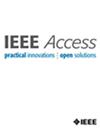Unsupervised Anomaly Detection in Hyperspectral Imaging: Integrating Tensor Robust Principal Component Analysis With Autoencoding Adversarial Networks
IF 3.4
3区 计算机科学
Q2 COMPUTER SCIENCE, INFORMATION SYSTEMS
引用次数: 0
Abstract
Hyperspectral (HS) image analysis has gained significant attention due to its ability to capture detailed spectral information across hundreds of bands, making it useful for environmental monitoring and mineral exploration applications. However, detecting anomalies in HS images, especially in complex scenes, remains challenging. This paper proposes a novel approach for robust anomaly detection by integrating tensor robust principal component analysis (TRPCA) with autoencoding adversarial networks (AEAN). Our method utilizes the AEAN model to learn a nonlinear low-dimensional representation of the spectral characteristics of background regions, which is then incorporated into the TRPCA framework. The TRPCA is further enhanced by incorporating prior knowledge of the sparsity of anomalous regions, enabling more accurate separation of background and anomaly components. This integration, achieved through a plug-and-play alternating direction method of multipliers (PnP-ADMM), significantly improves detection accuracy and robustness. Experimental results on benchmark datasets widely used for HS anomaly detection confirm that the proposed method consistently outperforms conventional techniques, achieving superior area-under-the-curve (AUC) scores across diverse and complex scenes. By leveraging both nonlinear modeling of background characteristics and sparsity-based anomaly separation, this research provides a more accurate and robust solution for HS anomaly detection, highlighting its potential for practical applications in remote sensing.求助全文
约1分钟内获得全文
求助全文
来源期刊

IEEE Access
COMPUTER SCIENCE, INFORMATION SYSTEMSENGIN-ENGINEERING, ELECTRICAL & ELECTRONIC
CiteScore
9.80
自引率
7.70%
发文量
6673
审稿时长
6 weeks
期刊介绍:
IEEE Access® is a multidisciplinary, open access (OA), applications-oriented, all-electronic archival journal that continuously presents the results of original research or development across all of IEEE''s fields of interest.
IEEE Access will publish articles that are of high interest to readers, original, technically correct, and clearly presented. Supported by author publication charges (APC), its hallmarks are a rapid peer review and publication process with open access to all readers. Unlike IEEE''s traditional Transactions or Journals, reviews are "binary", in that reviewers will either Accept or Reject an article in the form it is submitted in order to achieve rapid turnaround. Especially encouraged are submissions on:
Multidisciplinary topics, or applications-oriented articles and negative results that do not fit within the scope of IEEE''s traditional journals.
Practical articles discussing new experiments or measurement techniques, interesting solutions to engineering.
Development of new or improved fabrication or manufacturing techniques.
Reviews or survey articles of new or evolving fields oriented to assist others in understanding the new area.
 求助内容:
求助内容: 应助结果提醒方式:
应助结果提醒方式:


